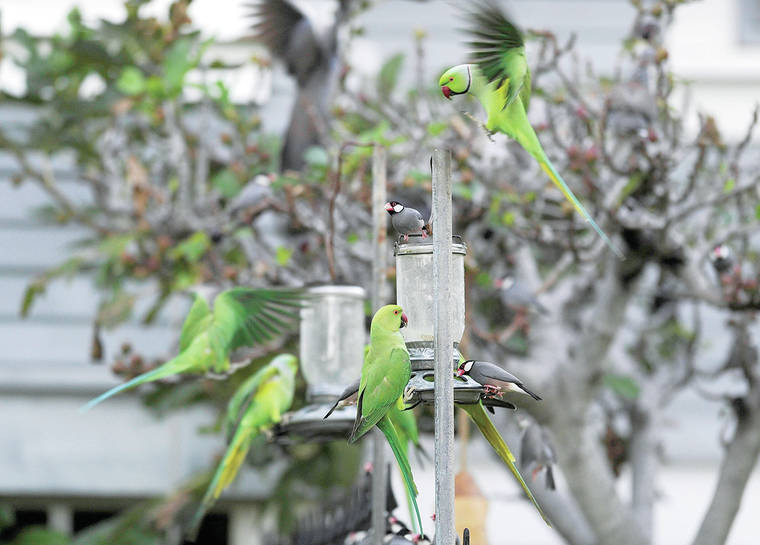KEKAHA — Researchers have documented a decrease in Kauai’s population of rose-ringed parakeets, a invasive species plaguing local farms.
The island had a minimum of 7,300 of the parakeets this year, down from 10,500 last year, said Jane Anderson, assistant professor of research at Caesar Kleberg Wildlife Research Institute of Texas A&M University — Kingsville.
Tiffani Keanini, manager of Kauai Invasive Species Committee, said her organization launched a campaign to get people to report parakeets roosts, or sites where large numbers of the birds gather to sleep at night.
Mango farmer Wally Johnson of Kekaha told The Garden Island newspaper he first saw the parakeets six to seven years ago. He’s had workers scare them away with shotguns.
The U.S. Department of Agriculture’s National Wildlife Research Center suggests controlling their numbers by capturing birds with live traps or with long-handled nets at roosting spots.
Anderson said Kauai’s parakeets are believed to have descended from pets that were released in the 1960s.
They damage crops because they flock in groups of 50 to 100. They’re been known to eat corn, lychee, citrus, mango, longan and papaya.
“This is impacting the large cornfields as well as local fruit farms and backyard growers,” Anderson said.

